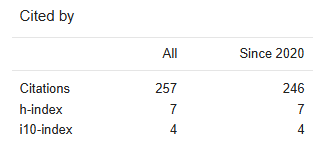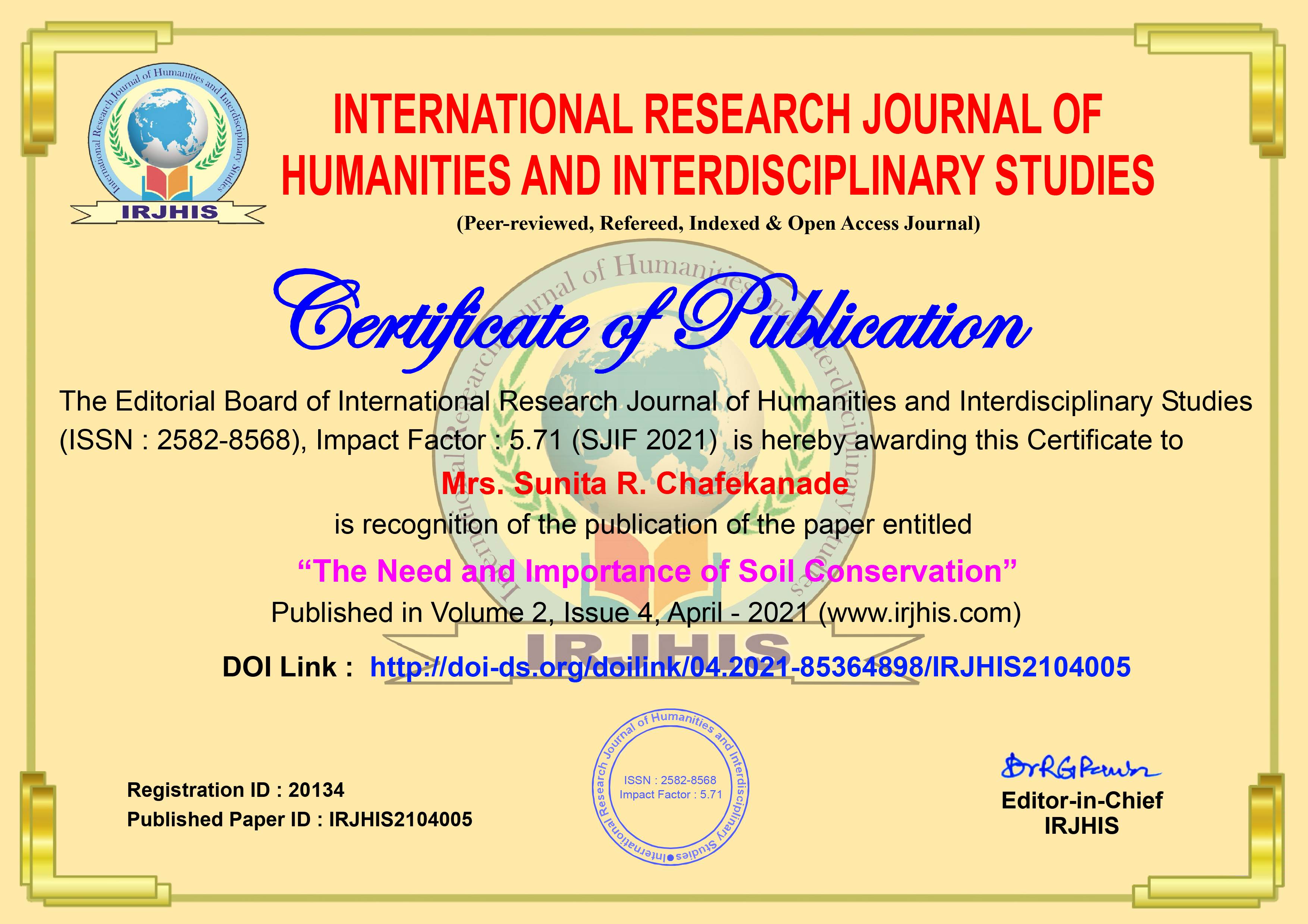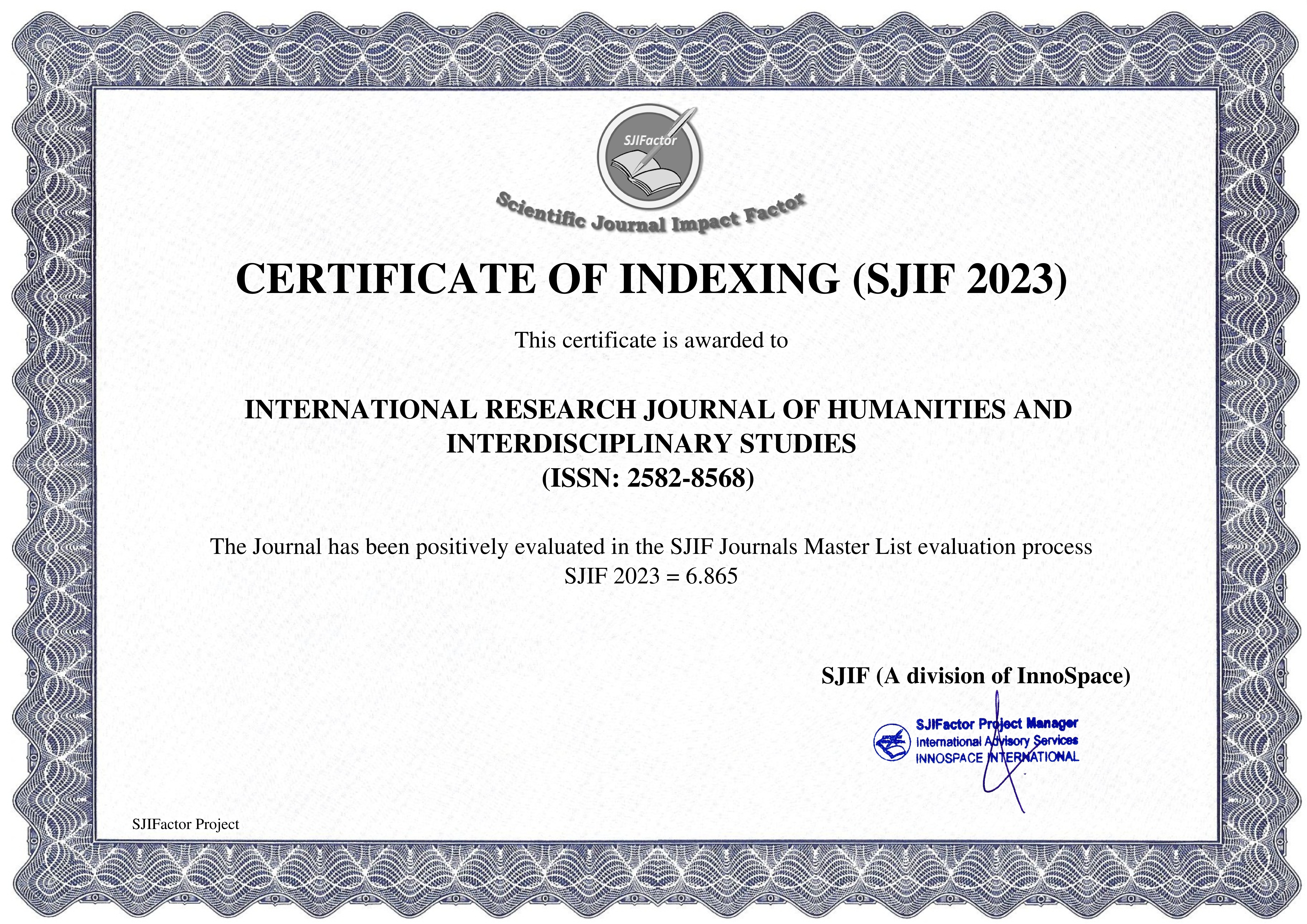Paper Details


Call For Papers
Volume 06, Issue 11
Frequency: 12 Issue per year
Paper Submission: Throughout the Month
Acceptance Notification: Within 2 days
Areas Covered: Multidisciplinary
Accepted Language: Multiple Languages
Journal Type: Online (e-Journal)
Announcement

Publish books with ISBN Number
- Edited Book
- Text Book
- Ph.D Thesis
- Conference Proceedings
ISSN Number:
2582-8568
Journal DOI No:
03.2021-11278686
Title:
Inklings from the Past: Subtle Psychological Angst of Violence and Trauma in Murakami's Kafka on the Shore
Authors:
Cite this Article:
,
Inklings from the Past: Subtle Psychological Angst of Violence and Trauma in Murakami's Kafka on the Shore, International Research Journal of Humanities and Interdisciplinary Studies (www.irjhis.com), ISSN : 2582-8568, Volume: 4, Issue: 5, Year: May 2023, Page No : 87-92,
Available at : http://irjhis.com/paper/IRJHIS2305013.pdf
Abstract:
Haruki Murakami's Kafka on the Shore is a powerful exploration of the psychological impact of violence and trauma. Throughout the novel, Murakami portrays a range of different forms of violence, including physical, sexual, and psychological violence. These depictions are often graphic and unsettling, highlighting the traumatic impact of violence on both the victims and perpetrators. The use of magical realism adds a surreal dimension to the violence, underlining the ways in which traumatic experiences can distort one's perception of reality. The novel follows two central characters, Kafka Tamura, and Satoru Nakata, as they navigate a world populated by a range of human and supernatural characters. The article explores the profound impact of violence and trauma on the lives of these two characters as their early traumatic experiences have shaped their thoughts, feelings, behaviors, and their overall identity. The traumatic acts of violence in the novel have plunged both Nakata and Kafka into a state of emotional and psychological distress, causing them to experience dissociation from their own sense of self and from the society around them. This has led to significant challenges in forming trust, relationships, and connection with others, resulted in a profound impact on their overall mental and emotional well-being, affecting their ability to lead fulfilling lives.
Keywords:
Violence, Trauma, Dissociation, Psychological impact, Memory
Publication Details:
Published Paper ID: IRJHIS2305013
Registration ID: 21077
Published In: Volume: 4, Issue: 5, Year: May 2023
Page No: 87-92
ISSN Number: 2582-8568
Download Full Paper: Click Here
Article Preview:





